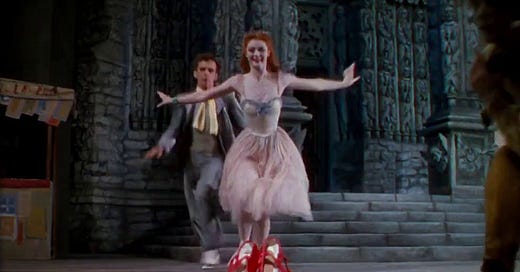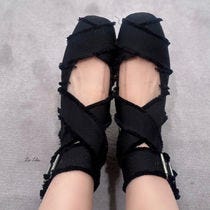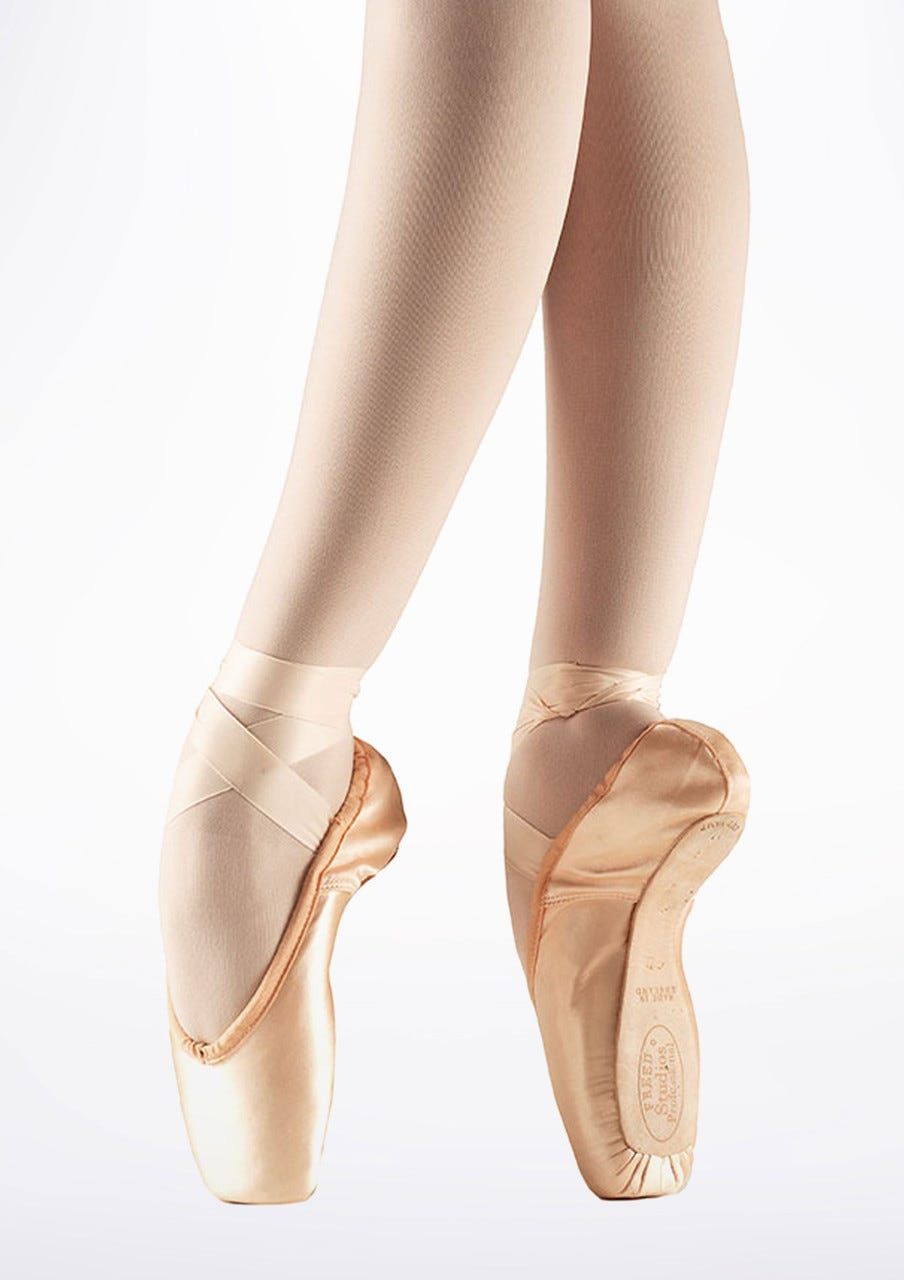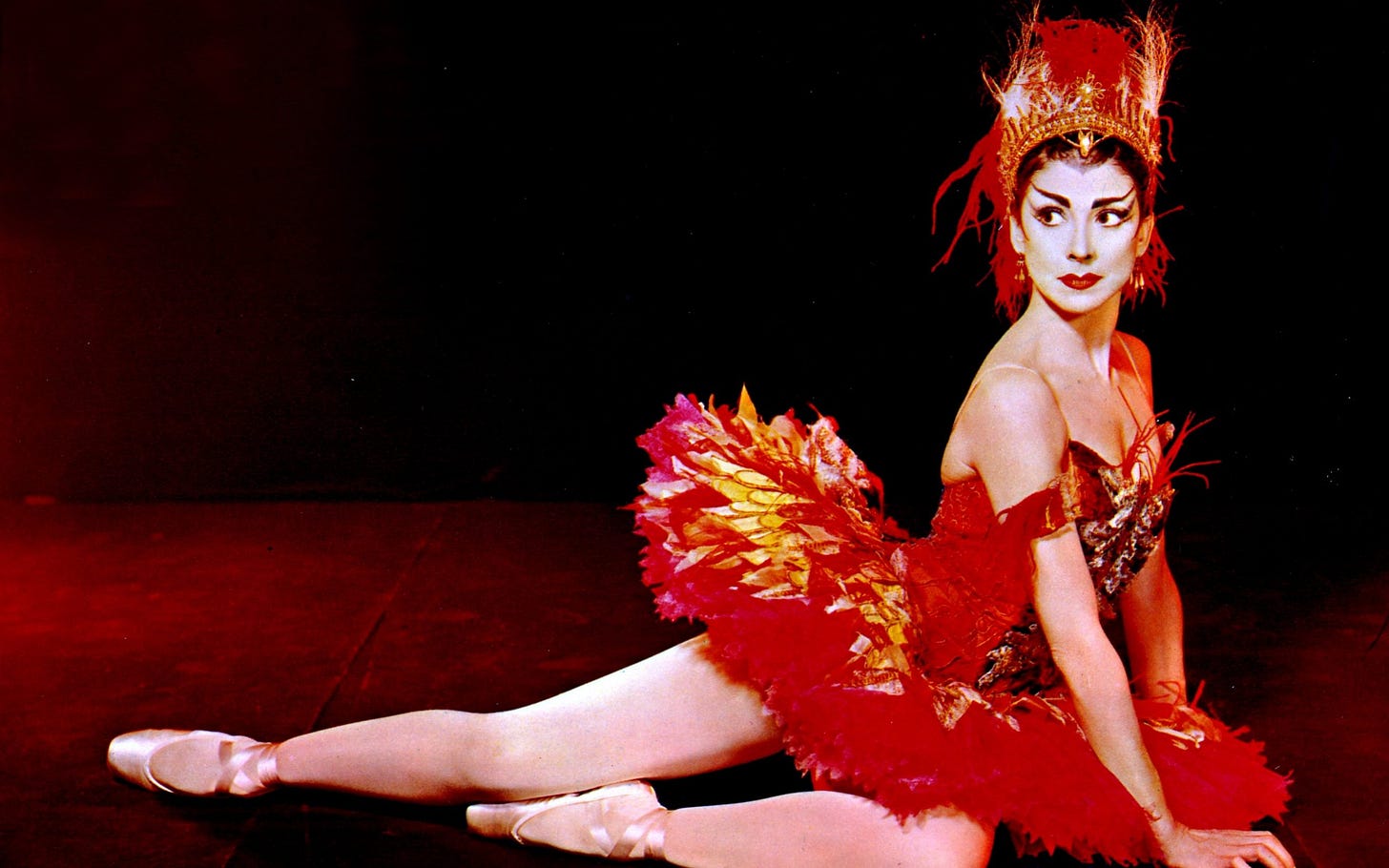Ballet Shoes. The words hold magic.
They are the title of the adored 1936 Noel Streatfeild novel, which for some reason I never enjoyed as a child - I preferred Lorna Hill (Veronica at the Wells) and Jean Estoril (Ballet for Drina) - but I would certainly have been praying to see the Christmas show at the National Theatre this year, which is an adaptation of the Streatfeild book. A wonderful idea. Ballet is voguish, or rather its magic is being acknowledged anew, in the face of years of criticism - some of it justified, quite a lot of it not - that it is ossified, rarefied, an art form with nowhere to go and nothing more to say.
To me, at its best - let us say Sylvie Guillem as Manon, a performance that I actually never properly saw because by the end I was just watching feeling, such was its magnitude - ballet is the supreme art form. Every part of a human being is used, with the utmost articulacy, in the cause. Of course these heights are rarely attained and ballet can also, even to me, who loves it passionately. seem slightly meaningless. But even then….
Back to ballet shoes. The ones pictured above are Dior, part of the SS24 collection. From what I have read they are somewhat divisive - somebody said they look like a pair of pointe shoes made by a depressive ten-year-old in a rage - but I sort of love them. In fact I find their take on the ballet shoe very compelling.
After all: pointe shoes - the ballet shoes - are being deconstructed from the moment of removal from their transparent wrappings, when nothing in the world looks so new. My own pair, bought in a near-blinding haze of excitement when I was a member of an amateur ballet company, are still relatively pristine because I couldn’t do much more than rise up in them. I treasure them, but they are neither one thing nor the other, neither unused nor honestly used.
In the world of professional ballet, where shoes are not artefacts but tools of the trade, as surely as a blacksmith’s anvil, their life is measured in hours. Dancers deliberately deconstruct their shoes, ripping out part of the shanks - insoles - and hammering on the box, which supports the toes, to soften it. The very strength of their feet subdues them, as if they are in a fight with their own shoes. Royal Ballet principal Natalia Osipova wears shoes that are famously ‘dead’, ie bendy as bananas fit for the bin, and their toes and vamps look not unlike pink satin versions of these Diors.
There is also - to my mind - an intimation of the Red Shoes, the fairytale upon which Powell-Pressburger’s 1945 film is based: the dream shoes in which a girl dances herself to death, of which these charred black items are the portrait-in-the-attic representation.
But really I love the Dior shoes because I love pointe shoes. I crave them. Therefore I am entranced by this imaginative couture tribute to them. The word iconic has become almost literally unbearable, used to describe anything from a Giles Gilbert Scott phone box to Gareth Southgate’s cardigans: yet, to me, the pointe shoe does indeed merit its usage. It is an object whose fascination goes above and beyond itself, which I suppose is what an icon is. It is a practical object, constructed to allow a dancer to place four times their weight through their feet, and thereby create an illusion of supernal physicality - of flight, weightlessness, transcendence, what you will. And, to the girls who yearn to be ballerinas, it is an object that gleams at them, grail-like, the symbol of the ballet dream.
In a very early post, when I had very few readers, I wrote about my desire to write a ballet memoir… a short book in similar spirit to my The Last Landlady, which was a memoir of my publican grandmother but also a wider meditation upon the pub itself. When I wasn’t in the backstage sitting-room of my grandmother’s pub or out with my parents at White City greyhound stadium I was a reasonably promising student at a ballet school (not the Royal, getting there was part of the dream), or I was fluttering excitedly around Covent Garden with my ‘best friend’, both of us with scraped-back hair and turned-out feet: until, at the age of about thirteen, physical predestination decreed that the ballet dream was entirely over (at which point my school said something along the lines of never mind darling, you can always be clever).
There are some truly wonderful books about ballet but none, to my knowledge, from this particular standpoint: the one of failure. And of course it wouldn’t be all me me me, it would be about ballet…. the why, the how, the who, the why now, the magic….
Anyway the idea was rejected, I think wrongly (being rejected by ballet is different: one completely understands the reasoning). But if they won’t, they won’t.
I am presently struggling with a commissioned book (I haven’t mentioned it because it has become so difficult - thank God for script-writing and for SUBSTACK: the sunlit periods of Eng Lit in a world of perpetual double maths) and of course, in such circumstances, the book that one is not writing takes on a hallowed desirability. I have about four such, which I imagine is quite normal, and the ballet one had lately moved toward the bottom of the ideas pile.
Then: last night I was at the Royal Opera House, for a sublime triple bill of ballets by Frederick Ashton. And with that pointe shoe sound - the hollow, dainty, politely muffled clip-clop on to the stage - a sound that one almost pre-hears, so embedded is it into the dark-red arena - my aural equivalent of that bite of madeleine… back, with a powerful rush, came my urge to write the book: in fact during the intervals my brain was ticking away on it, enhanced as such thoughts can be by a glass of good wine on an empty stomach….
It isn’t ready yet, and I can’t make it so yet, and I honestly don’t know if I ever shall, the life of a writer being so weirdly unaccountable. But I think Substack might just be the place for that book. Isn’t that what Substack is for? A home for the ideas that were rejected, as one thinks wrongly? And where, if they were in fact rightly rejected, no harm is done - people just don’t read them?
The beautiful democracy of writing and reading. So unlike ballet, which is as elitist as thoroughbreeding.
Anyway: here is a short riff on pointe shoes, my ballet school obsession with them, a taster of what this as yet unformed book might be….
Keep reading with a 7-day free trial
Subscribe to Laura Thompson’s Substack to keep reading this post and get 7 days of free access to the full post archives.








